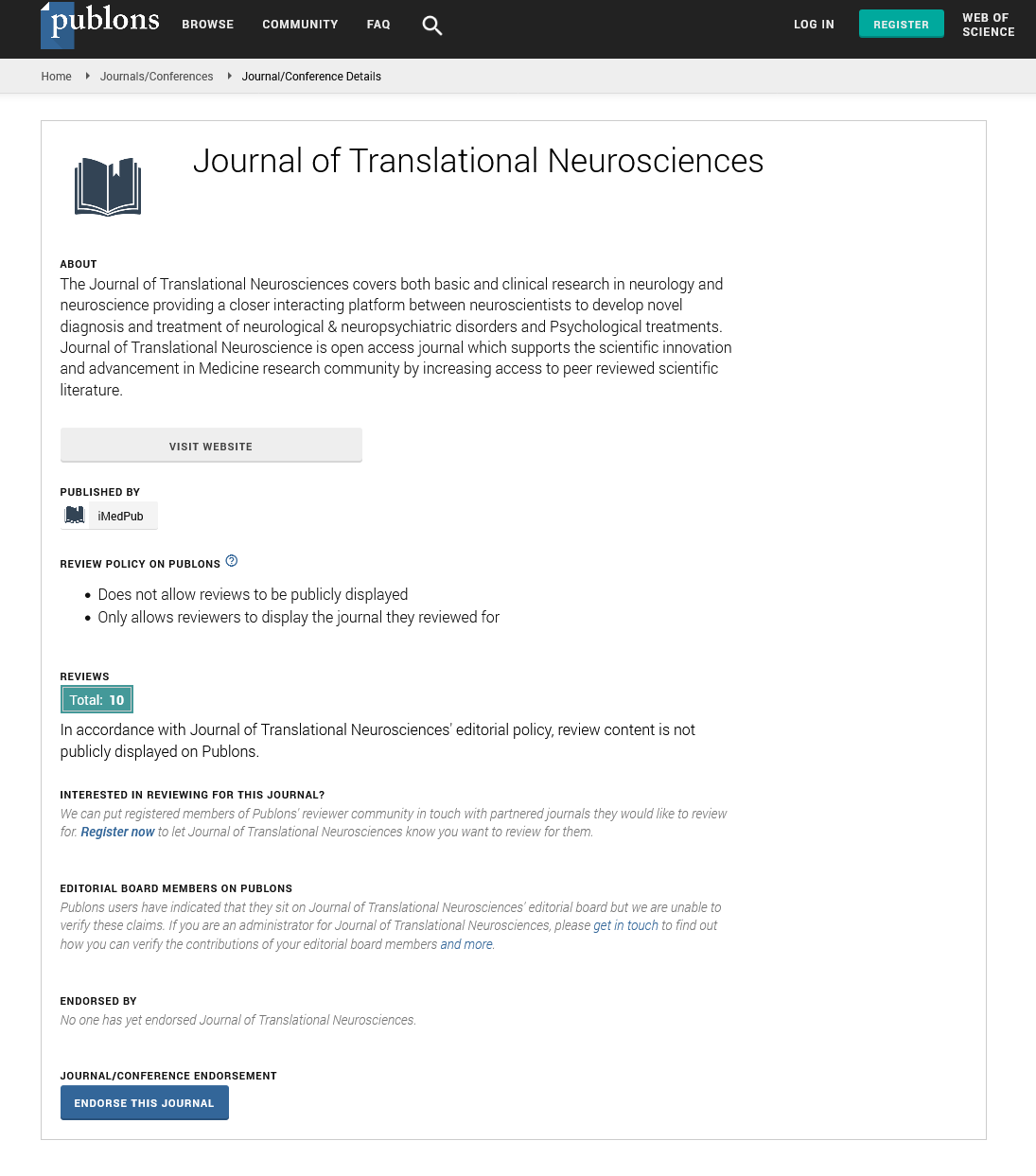Abstract
Basal Ganglionic Lesions in Egyptian children
Background: In childhood, the metabolic activity of the basal ganglia is greater, and they are particularly prone to injury. Damage to the basal ganglia cells may cause problems controlling speech, movement, consciousness, muscle tone, posture and cognition. Aim of the study: to determine the etiology of basal ganglionic disorders in a sample of Egyptian children. Methods: A cross sectional observational study was utilized on 34 patients attended at the Pediatric Neuro Outpatient Unit of Neurology department at f Al-Azhar University Hospitals during a period of one year from the beginning of November 2014 to the end of November 2015. A specialized pediatric neurologicalsheet, Cognitive assessment in children using Stanford-Binet Intelligence Scale and Laboratory investigations were performed. The included patients were classified according to MRI into two groups; ganglionic group that included patients with isolated basal ganglionic lesions (n=23) and para-ganglionic group that included patients with combined ganglionic as well as para-ganglionic lesions (n=11). Results: The frequency of male patients was slightly higher than the female patients in both groups without significant difference (13 (56.5%) versus 6 (43.5%) and 10 (54.5%) versus 5 ( 45.5%), in ganglionic and para-ganglionic groups, respectively). acute ischemic stroke wasthe most frequent cause, which wasfound in 12 (35.3%) cases, followed by 10 (29.4%) had metabolic and infectious causes, and lastly 2 (5.9%) had toxic causes. The incidence of toxic causes (CO poisoning) was significantly higher among ganglionic group compared to para-ganglionic group (2(8.7%) versus 0(0.0%),respectively). According to brain MRI imaging, bilateral basal ganglion affection wasthe most frequent lesions among ganglionic group 16 (69.7%).while temporal affection (temporal were2 (18.2%) , tempro-parietal were2 (18.2%) and tempro-occipital was 1 (9.1%) ) was the most frequent lesions among para-ganglionic group5(45.5%). Conclusion: acute ischemic stroke was the most frequent cause of basal ganglionic lesion in a sample of Egyptian children.
Author(s):
Hamada I Zehry, Shora Y Darwish, Sayed A El Zayat, Mohamed F Abdelmotey, Hassan K Gad, Hossam M Emam and Mohie El din T Mohamed
Abstract | PDF
Share this

Google scholar citation report
Citations : 46
Journal of Translational Neurosciences received 46 citations as per google scholar report
Journal of Translational Neurosciences peer review process verified at publons
Abstracted/Indexed in
- Google Scholar
- JournalTOCs
- China National Knowledge Infrastructure (CNKI)
- Publons
- Secret Search Engine Labs
- Euro Pub
Open Access Journals
- Aquaculture & Veterinary Science
- Chemistry & Chemical Sciences
- Clinical Sciences
- Engineering
- General Science
- Genetics & Molecular Biology
- Health Care & Nursing
- Immunology & Microbiology
- Materials Science
- Mathematics & Physics
- Medical Sciences
- Neurology & Psychiatry
- Oncology & Cancer Science
- Pharmaceutical Sciences


